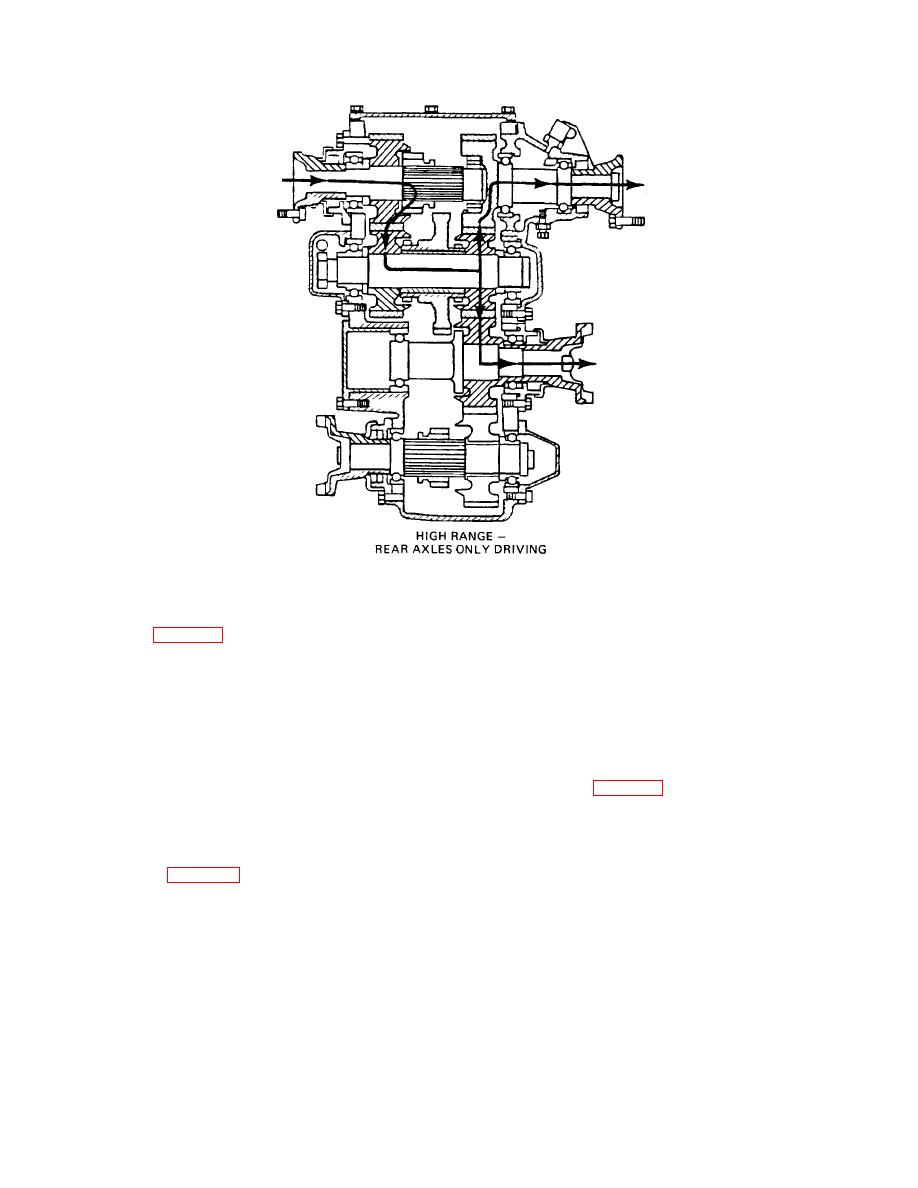
| Tweet |

Custom Search
|
|

|
||
 TM 9-8000
Figure 27-4. Power Flow in Transfer Assembly, (Part B)
Section III. DEFFERENTIAL-TYPE TRANSFER ASSEMBLIES
range mode, engine torque is transmitted directly to the
differential carrier, whereas in the low-range mode,
assembly provides full-time four-wheel drive by the
engine torque is delivered to the differential carrier via the
incorporation of differential gears between the front and
countergear and low-speed gear. Torque then is divided
rear driving axles. The differential action between the
between the front and rear driving axles. Front axle
front and rear driving axles allows four-wheel drive
torque is transmitted via a drive chain to the front output
operation at all times, without the component wear
shaft. The rear-axle torque is transmitted directly to the
problems that are associated with conventional transfer
rear output shaft from the differential carrier.
assemblies. For off-road use, a sliding clutch is provided
to lock out the differential unit, providing positive four-
b. Locked (Fig. 27-5). When the transfer assembly
wheel drive. This is necessary because the differential
is locked, the sliding lock clutch locks the differential
will transfer all torque to either drive axle if it loses
carrier so that the front and rear output shafts will
traction, disabling the vehicle. The differential lockout is
operate's a unit. All other power flow within the transfer
engaged by a lever in the passenger compartment.
assembly is the same as it is when the case is unlocked.
27-6. Operation(Fig. 27-5).
a. Unlocked. Engine torque is transmitted to the
assembly through the input gear. In the high-
TA233764
27-4
|
||
 |
||